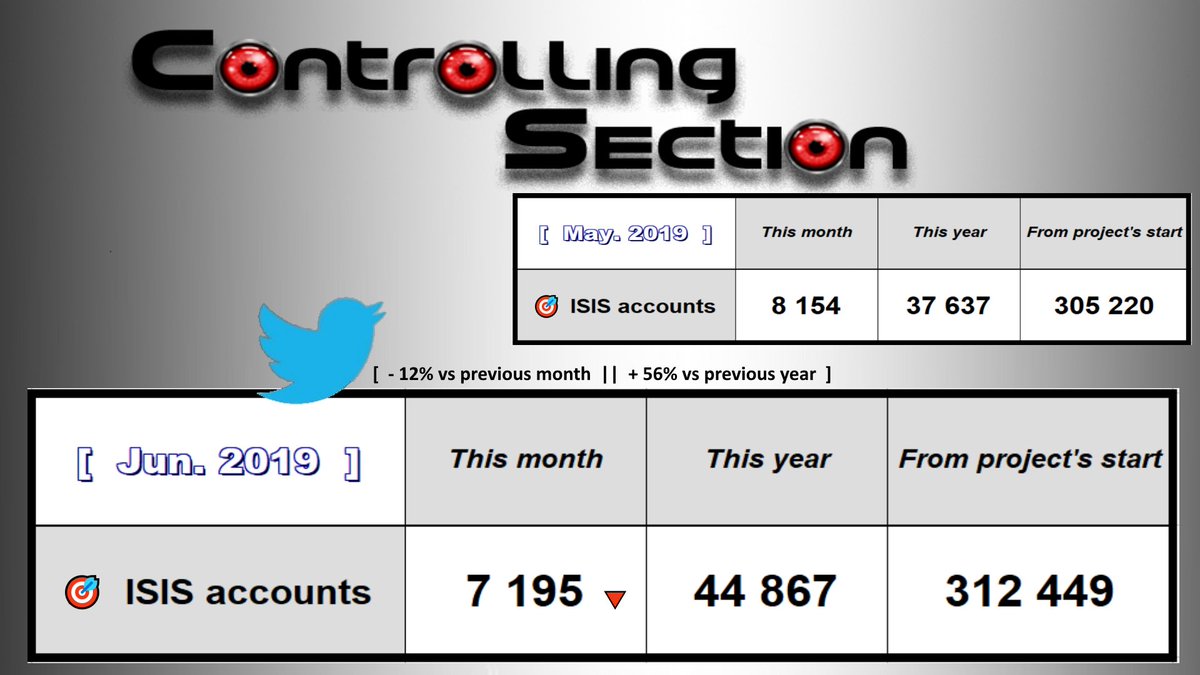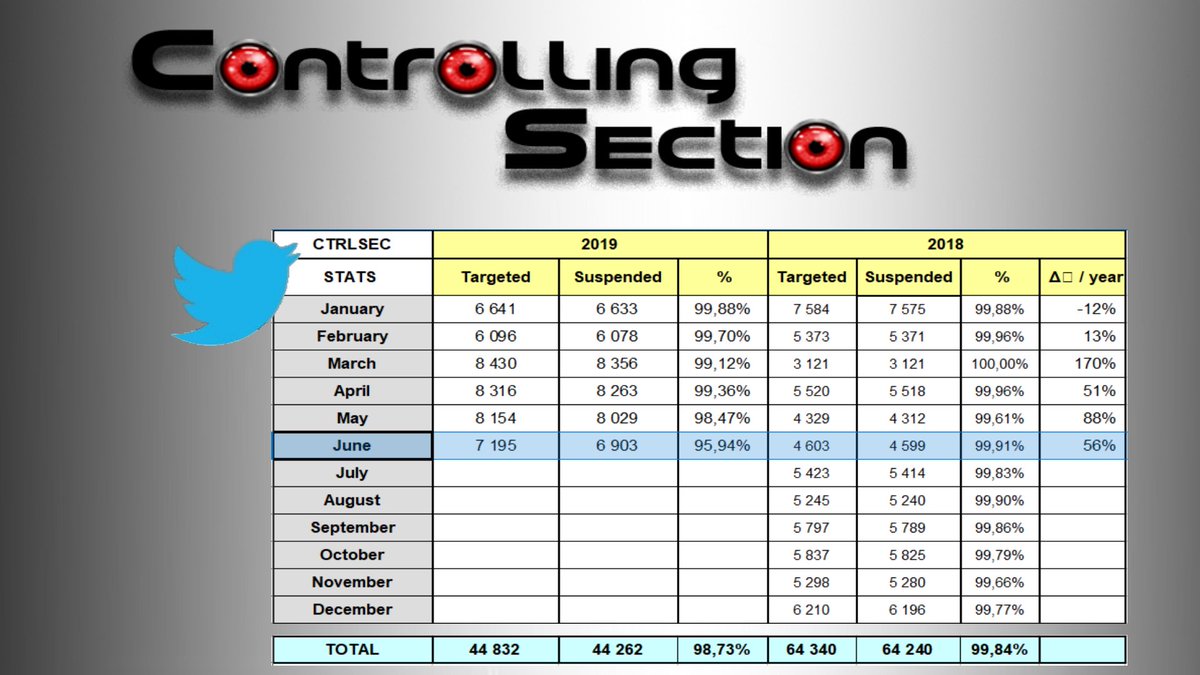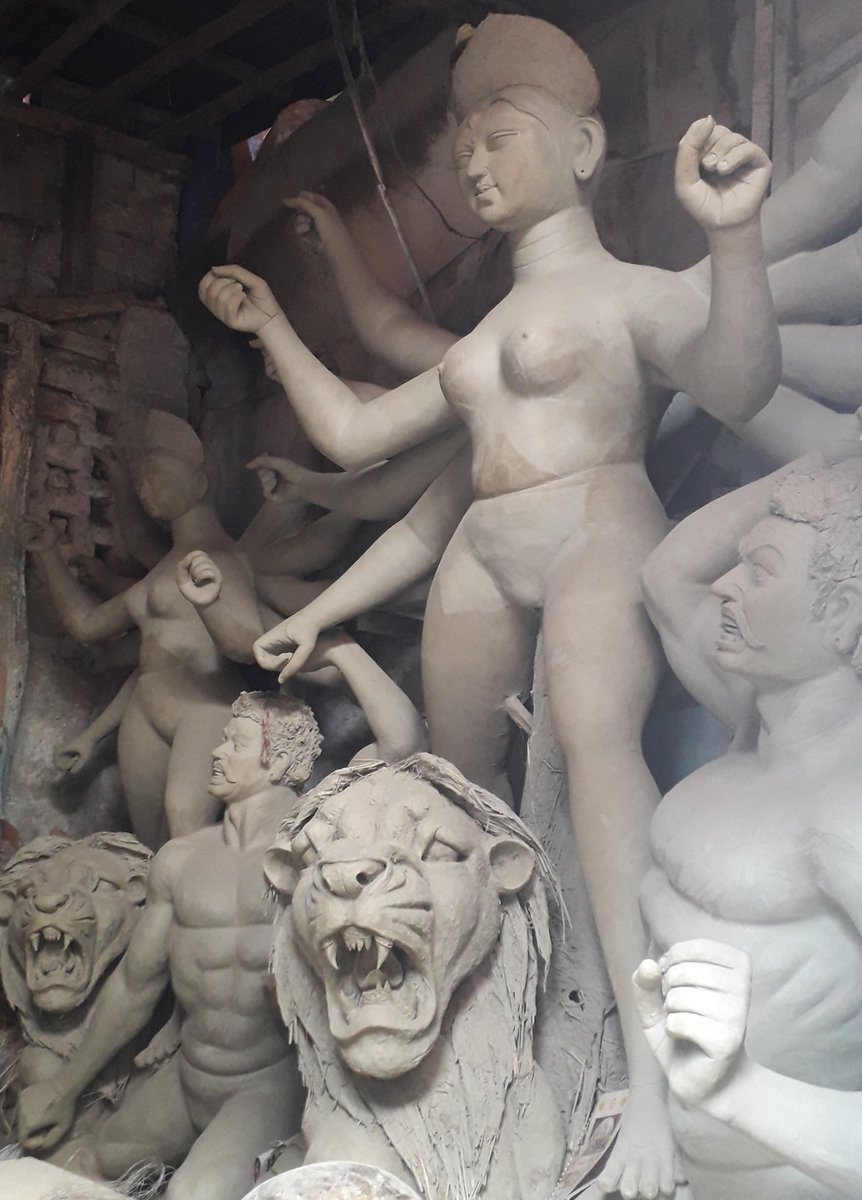
#Navratri #Navaratri2019
#Navaratri2019 #Navratri
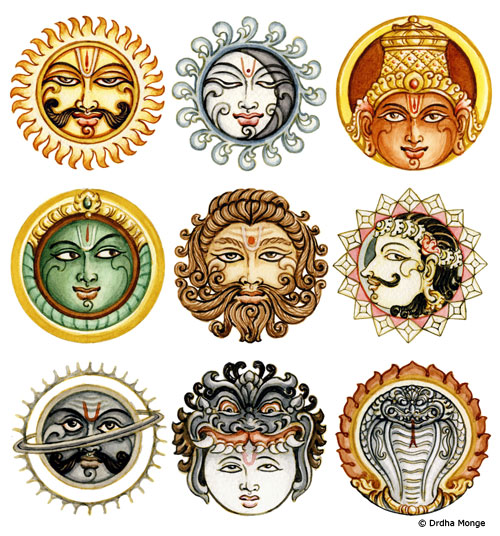
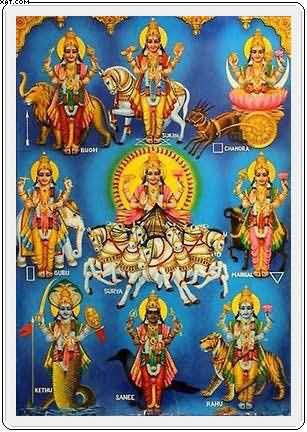
Tomorrow's Monday, "Somavara" and the 2nd Kriti is dedicated to Chandra (Soma), and so on. #Navratri
This is a stamp dedicated to Dikshithar issued in 1976 (the bicentennial of his birthday).
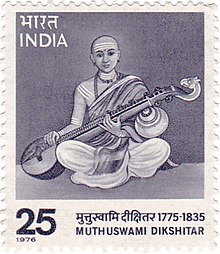
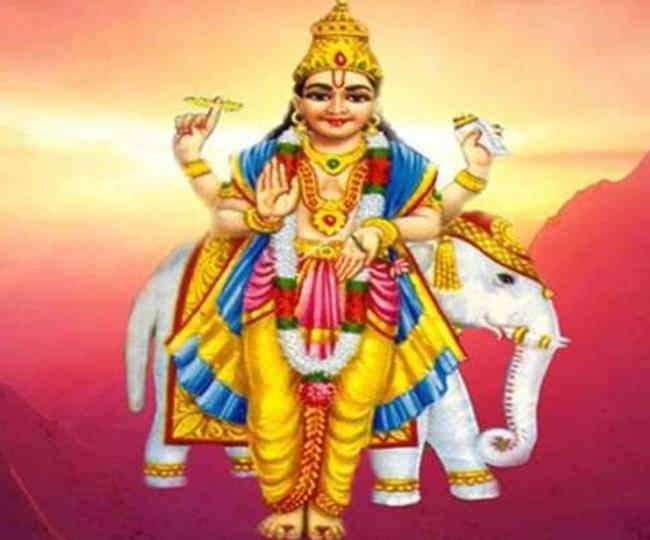
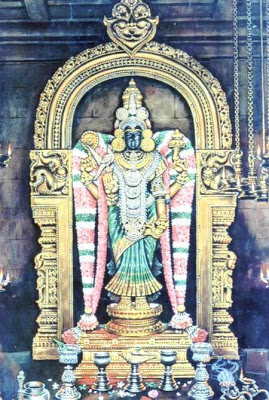
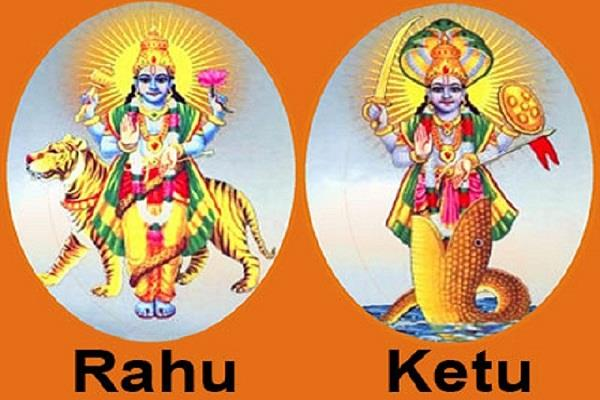
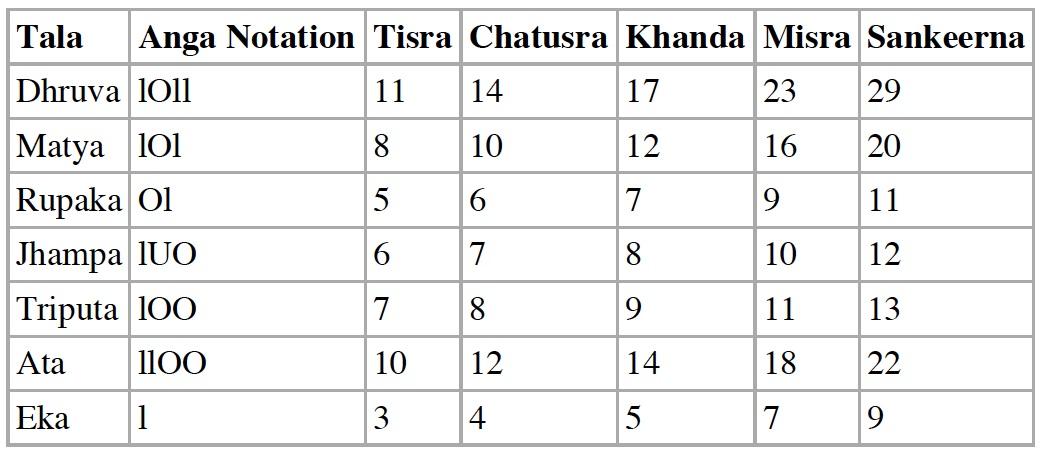
As we have seen with the Navavaranas, with Dikshithar kritis, every aspect is important, the lyrics, the choice of Ragam, Talam etc.
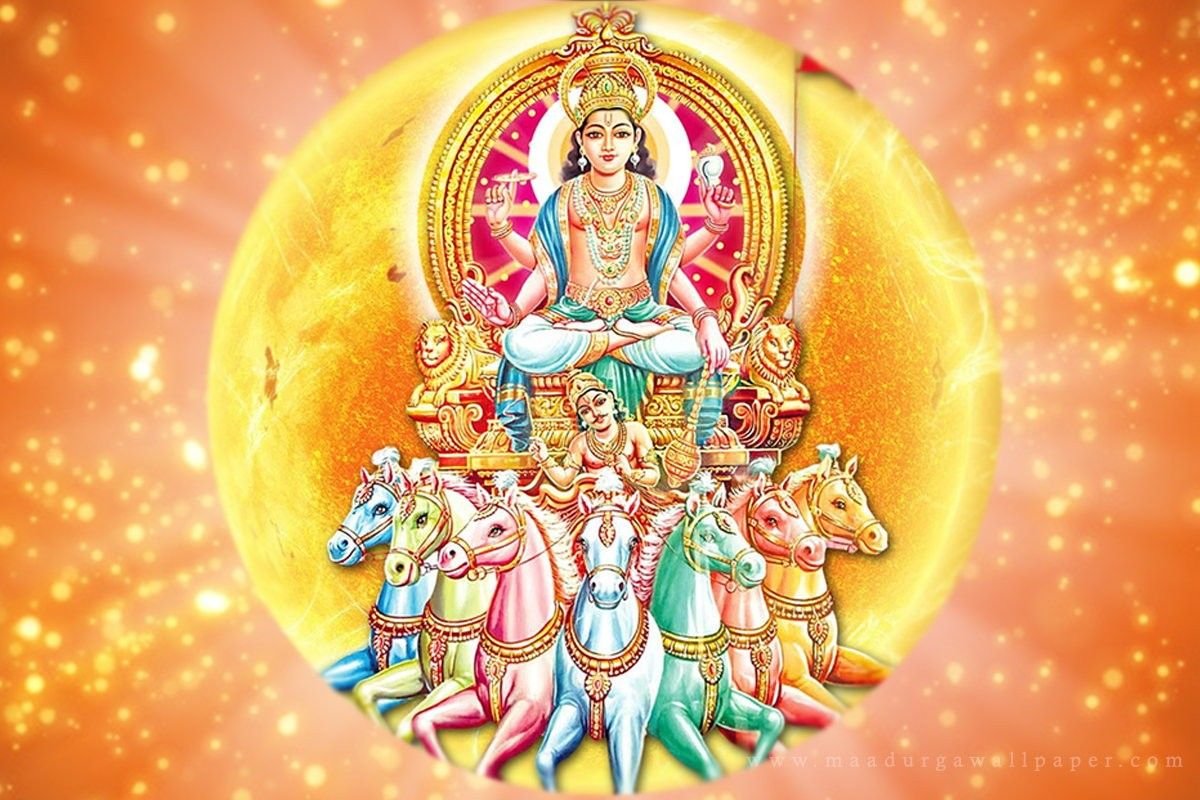
Chhaaya is a word we associate with shadow. Most Pauranic accounts agree that the consort of Surya, Saranyu, leaves him for the forest. +
Here we have Saranyu and Chhaaya. See if you can tell the difference :)
The story of how Surya discovers this is not relevant to us. #Navaratri2019 #Navratri
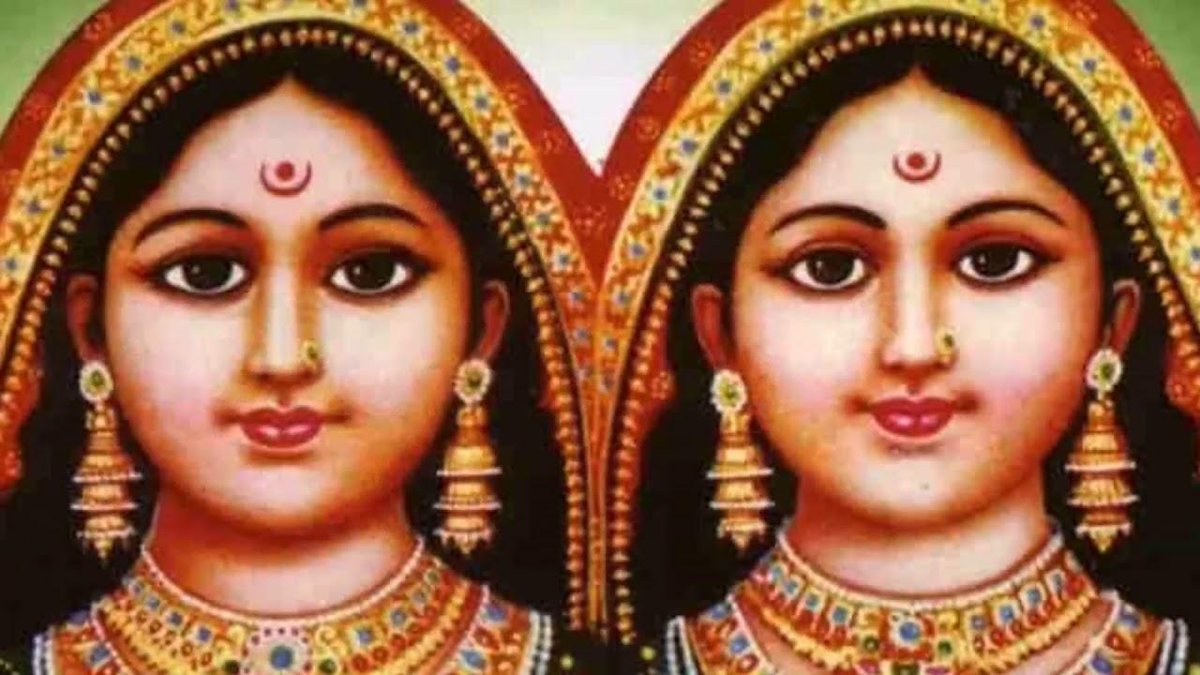
Perhaps he felt that considered a lesser being, Chhaaya would find cause to sympathise with the devotee.
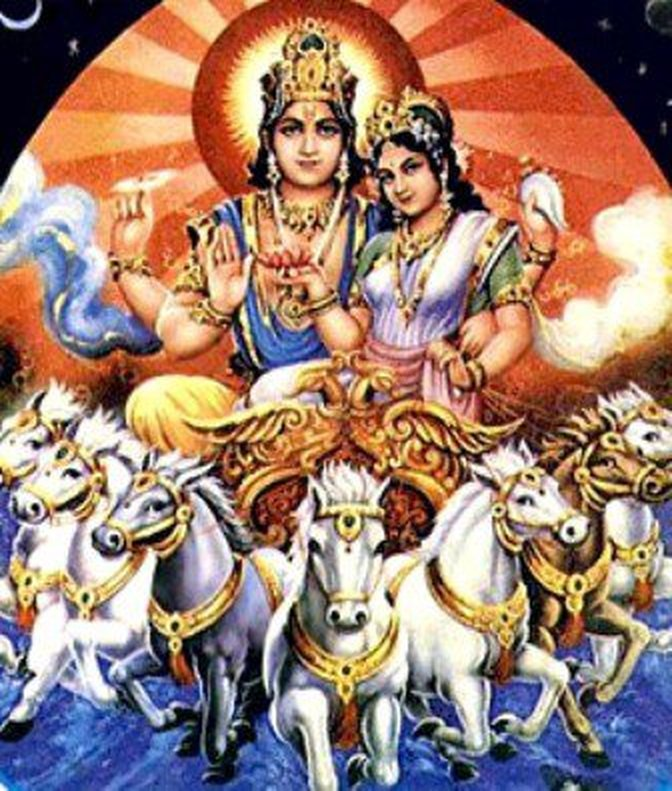
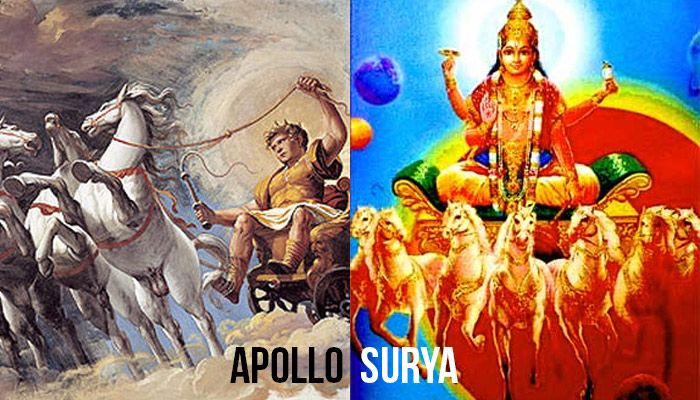
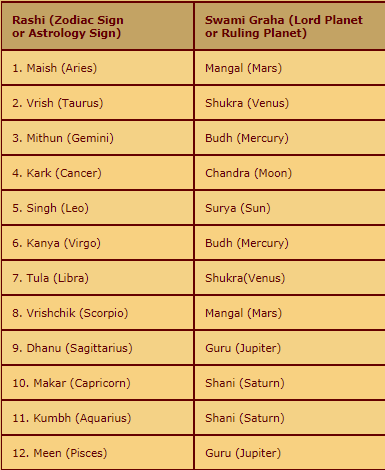
"Aarogyaadi..." Surya bestows benefits starting from health.
Anyone here with a Vitamin D deficiency? :)
Surya is also the thousand-rayed fire that swallows all sins.
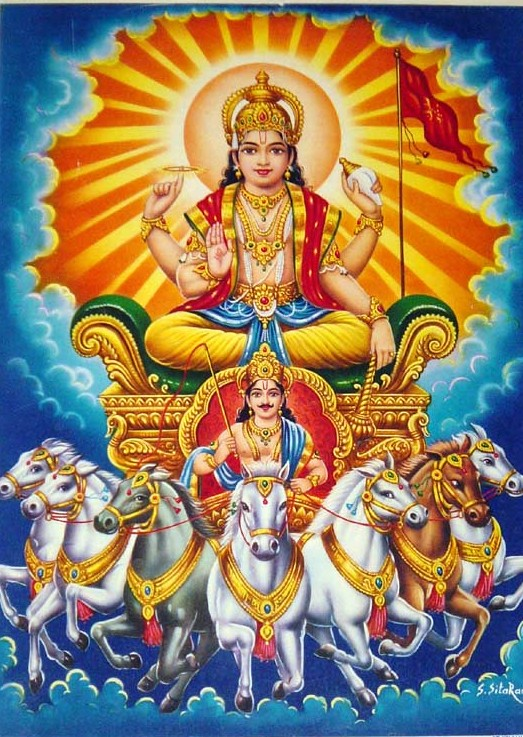
This is followed by the signature verse found in several of Dikshithar's kritis, where he uses his chosen pen name, Guruguha, who is delighted by the brilliance of Surya.
And here, Dikshithar brings in his knowledge of Jyotisha and calls Surya as the crest jewel of the Navagrahas "Grahashikhamane" he says.
See how central his presence is?
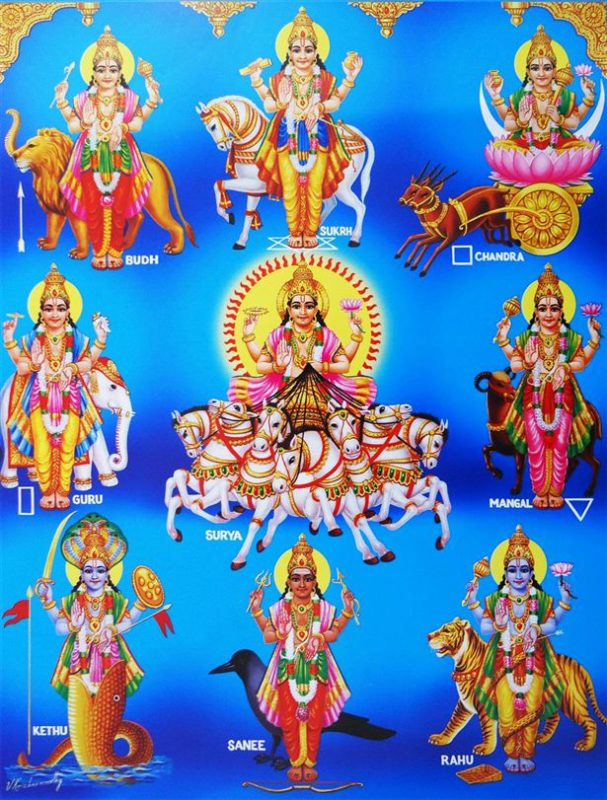
This draws from the Saura sect where Surya is the main deity.
The choice of ragam for this kriti is Saurashtram.
He splits the word Saurashtram, into Saura and Ashta, suffixes the latter with aarnamantratmane to get to the Saura Ashtakshara!
But there's more! With Dikshithar, there's always more!
In his system of ragams, Dikshitar calls Suryakantam as Chhaayavati, again showing his preference for Chhaaya over Saranyu!
Surya is also the form of Brahma, Vishnu and Isha (Shiva) and therefore gives both material benefits and mukti! #Navaratri2019 #Navratri
May his blessings be with us all!
#Navaratri2019 #Navratri
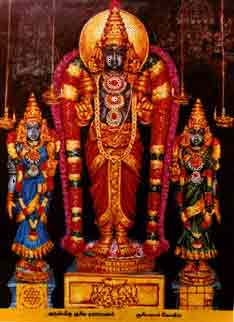
Tomorrow, Monday (Somavara), the day dedicated to the moon, we will look at the 2nd Kriti, dedicated to Soma, the moon. #ToBeContinued #Navaratri2019 #Navratri
As we had done with Surya, here's an image of Chandra. #Navaratri2019
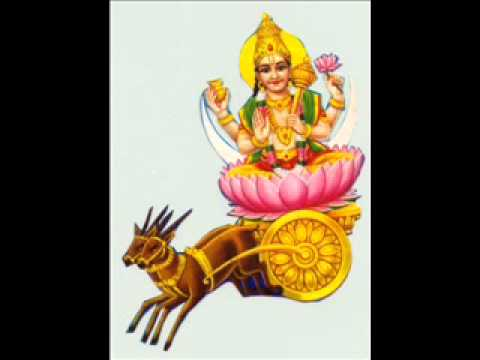
As Surya was the crest jewel of the Navagrahas, Chandra is the Lord of the stars, a reference to His marrying the 27 daughters (Star constellations) of Daksha. Here are the 27 Nakshatras.
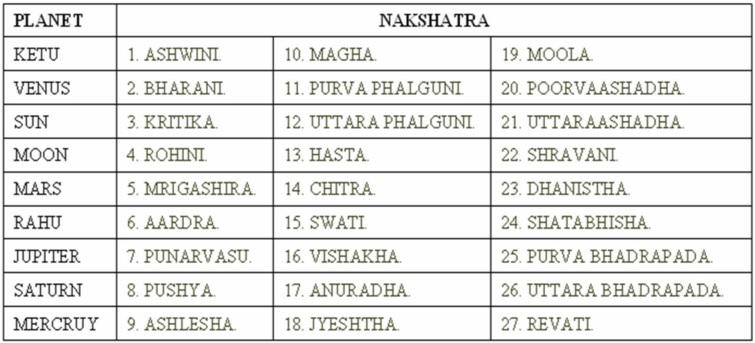
Dikshithar calls Chandra as brother of Indhiraa (Lakshmi), a reference to the story of churning the Milk Ocean for Amrit, when both Moon and Lakshmi emerged from the ocean and so, are siblings. Ref picture.

After all, who better to give cover to Madana (Manmatha), but the Lord of the Night. :)
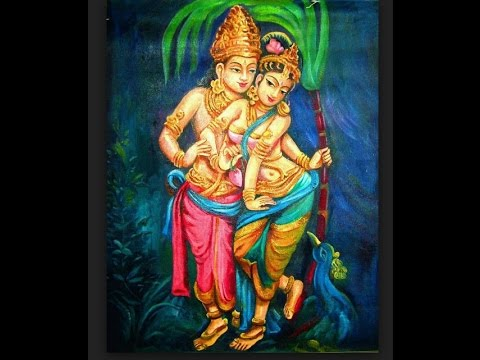
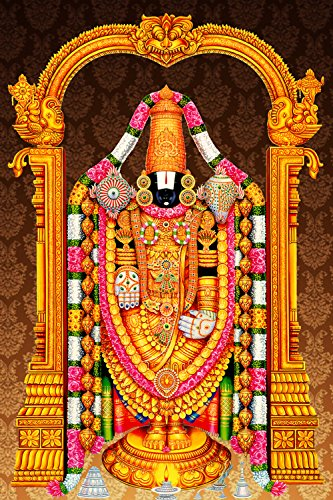
It goes dark, has animal aspects and has a twisted orbit.
If Siva deemed the moon worthy of adorning His hair, why not accept Sankara at his feet?
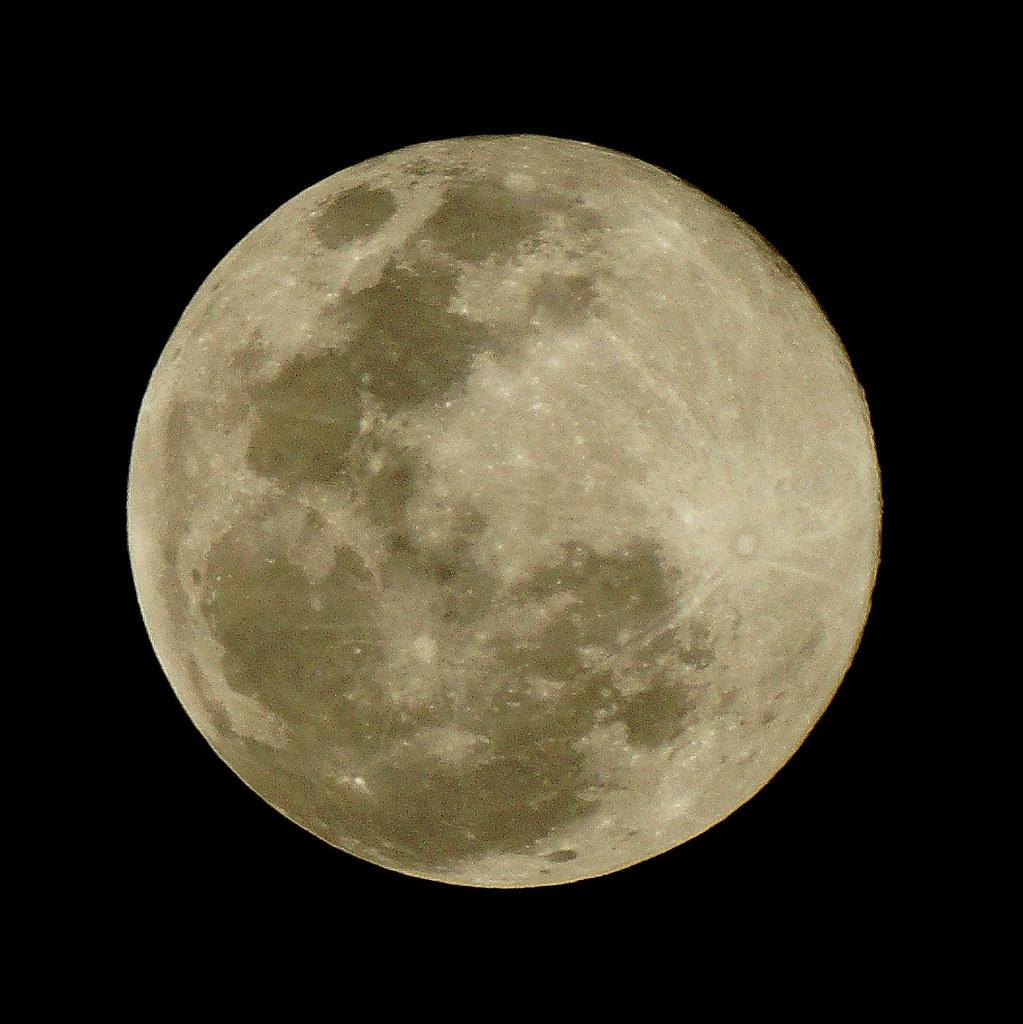
That this special love towards Rohini leads to Chandra being cursed by his Father-in-law Daksha is another story.
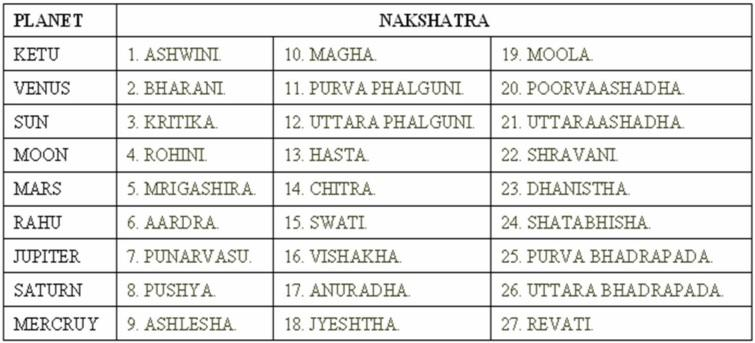
We will talk about the 3rd Kriti, dedicated to Angaraka tomorrow, Tuesday. #Navaratri2019
Let's look at the 3rd kriti of the Navagraha Kritis, dedicated to Angaraka/Mangala, Angarakam Ashrayamyaham.
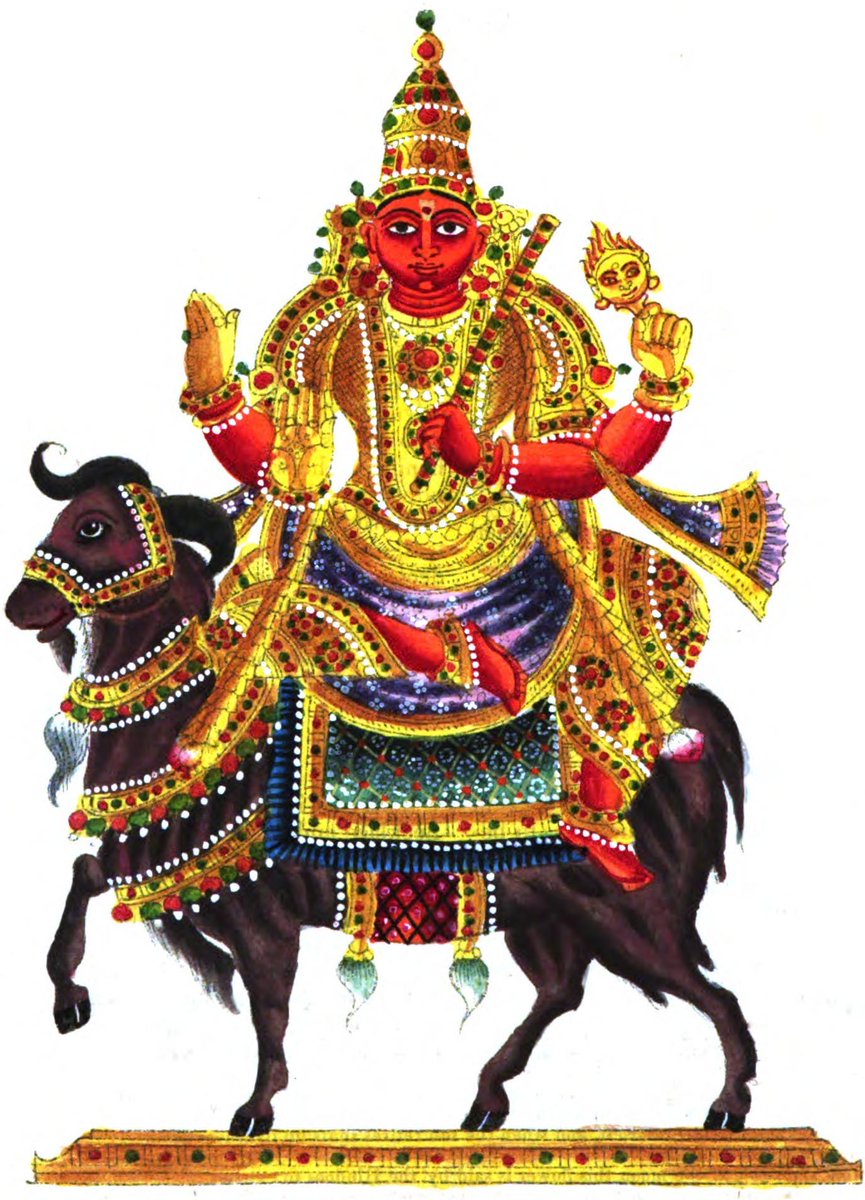
Why Mandara tree? Ref pic

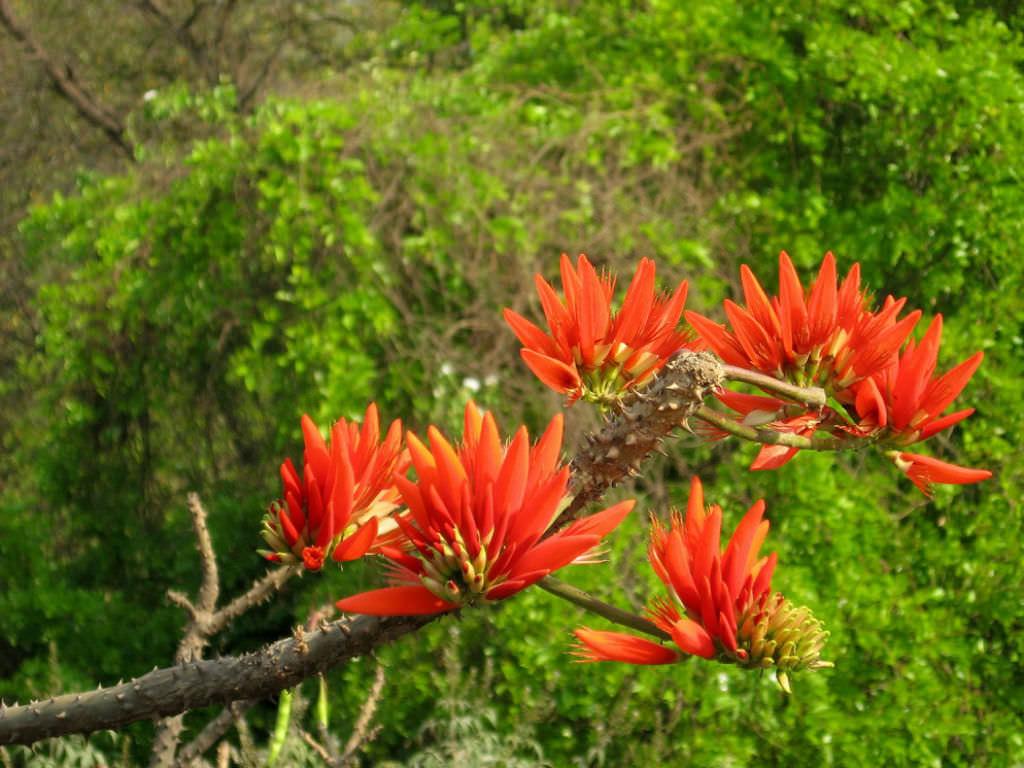
The reference is to the Pauranika story of Varahavatara, where Angaraka is born while Vishnu as Varaha, rescues Bhumi from the ocean.
It is then that our Graha of the day, Angaraka is born.
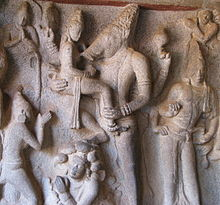
The red color finds its place again, with Dikshithar calling Him as red-limbed and wearing a red dress.
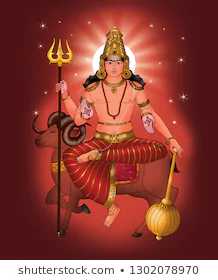
In other descriptions, he wields a Trishula, Gada (mace) and Lotus.
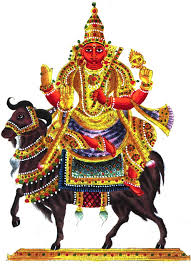
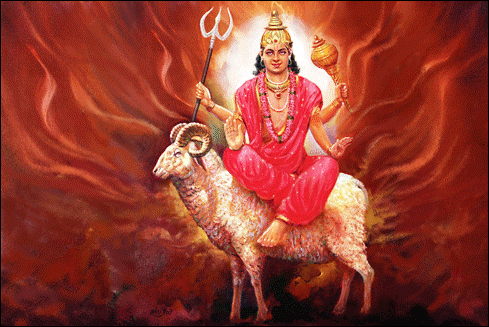
He rides the ram (Mesha) and occupies an exalted position in Capricorn (On the horoscope).

He has a smiling face and bestows on the worshipper, land and the support of brothers.
With such vigilant eyes, Angaraka is Dinarakshaka, the protector of the weak.
Vaideeswarankovil in TN,where Siva is beseeched by devotees, to propitiate Angaraka.
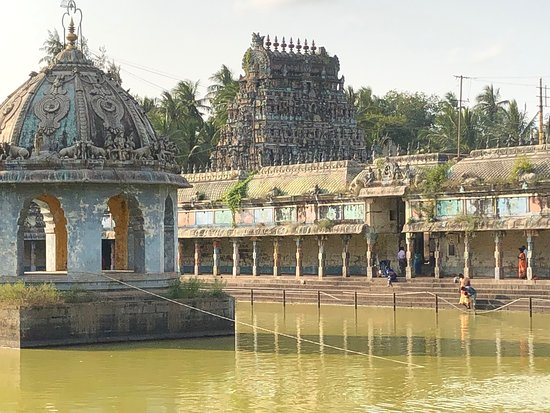
He says that Angaraka is the beneficiary of the blessings of Guruguha and other Gods.
He has a resplendent consort (Similarly called Mangalaa).
The kriti is composed in Surati Ragam and Roopaka Talam.
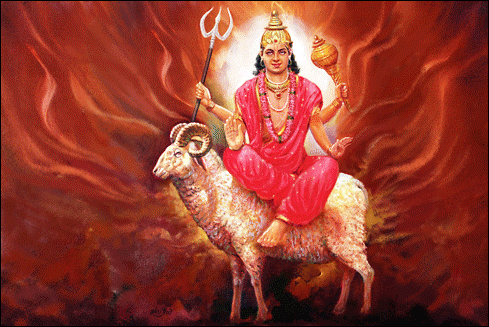
Tomorrow being Wednesday (Budhavaara), we will look at the 4th kriti, dedicated to Budha.
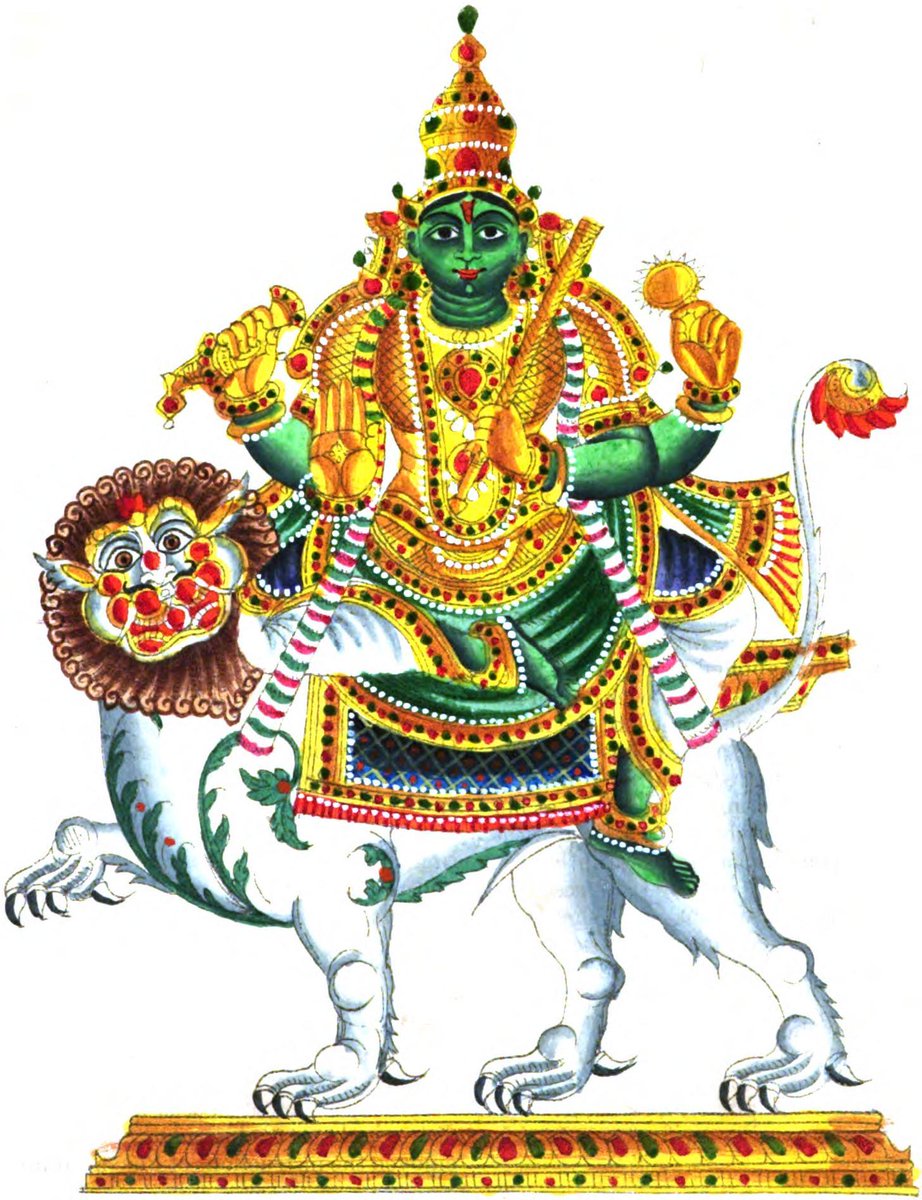
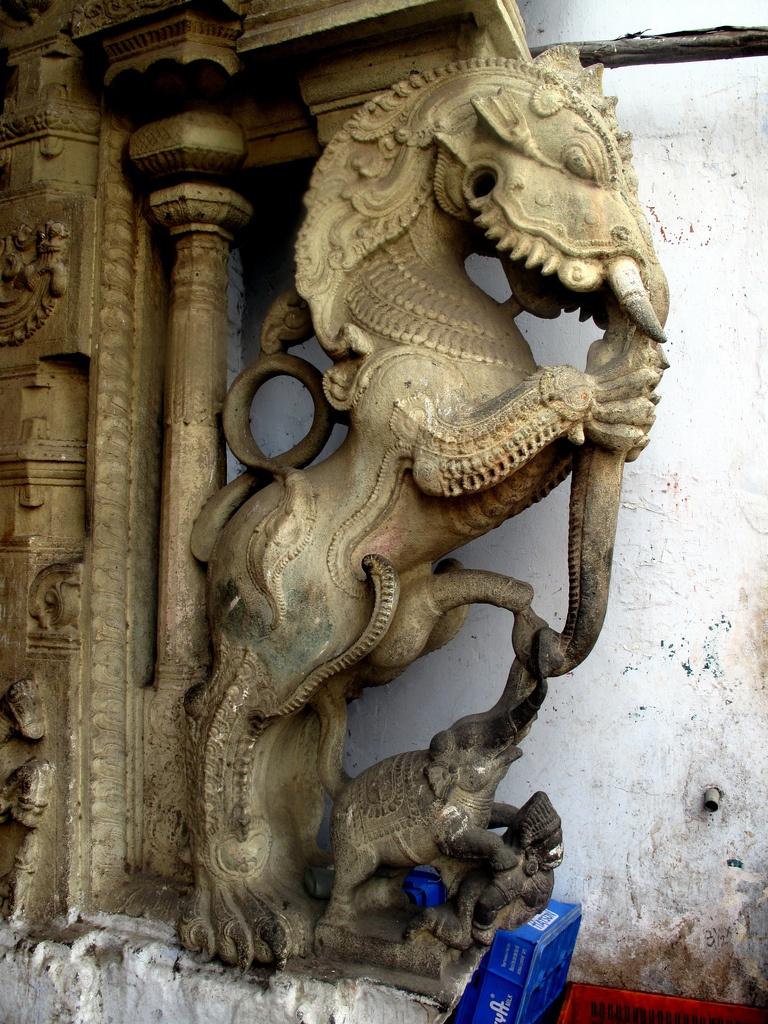
He says that Budha is the son of Chandra and Tara and is worshipped by the Devas (Suravinutam).
Tara eventually admits that the child is Chandra’s.
Continuing with the kriti now.
He bestows the art of poetry and great wealth to those who worship Him.
Budha wears a gem studded crown, necklace, armlets and bracelets, and holds a book in hand (check out scroll in upper right hand and the part about him bestowing poetry and arts?)
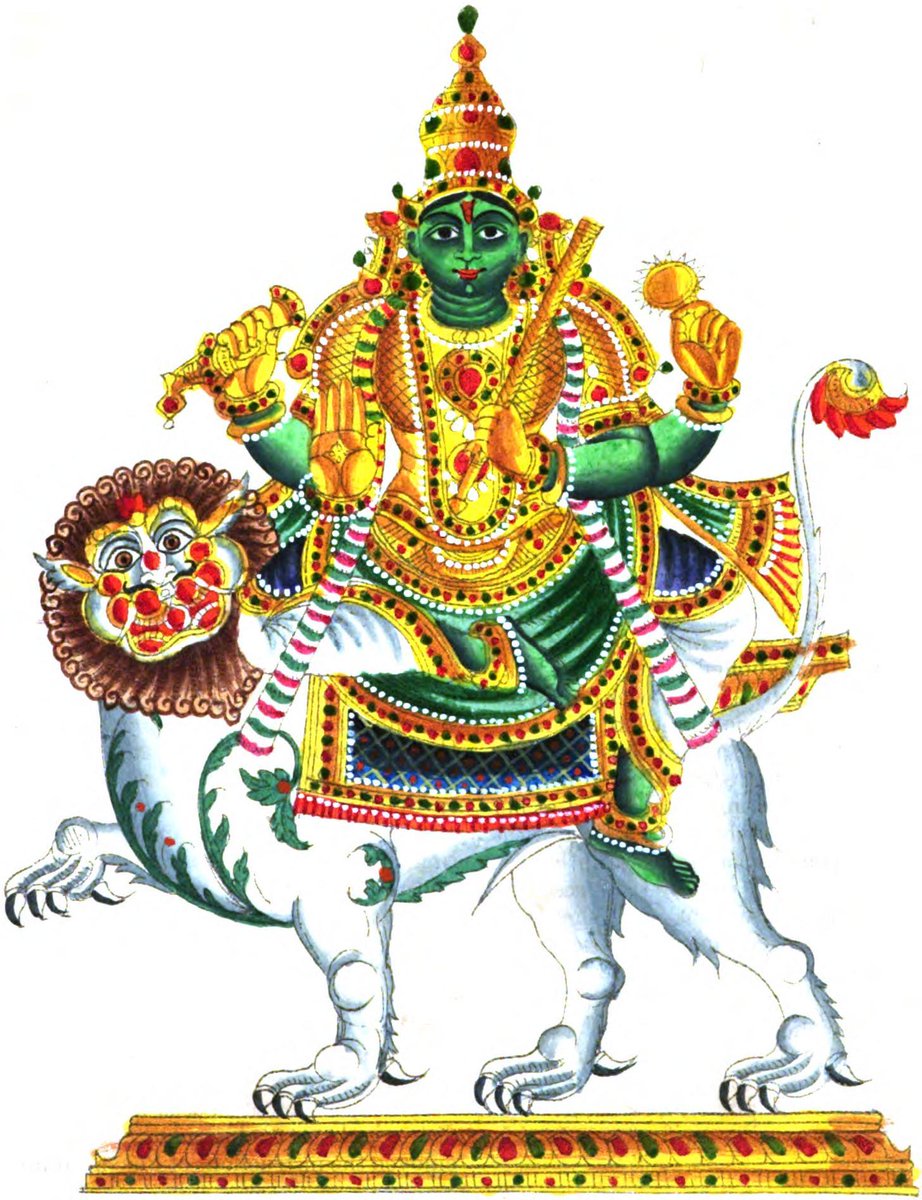
Budha eventually marries Ila, a deity who is born Sudyumna (male) and then transforms into a female (Ila).
Interestingly, their child is Pururavas, who being the grandson of Chandra, founds the Chandravanshi dynasty.
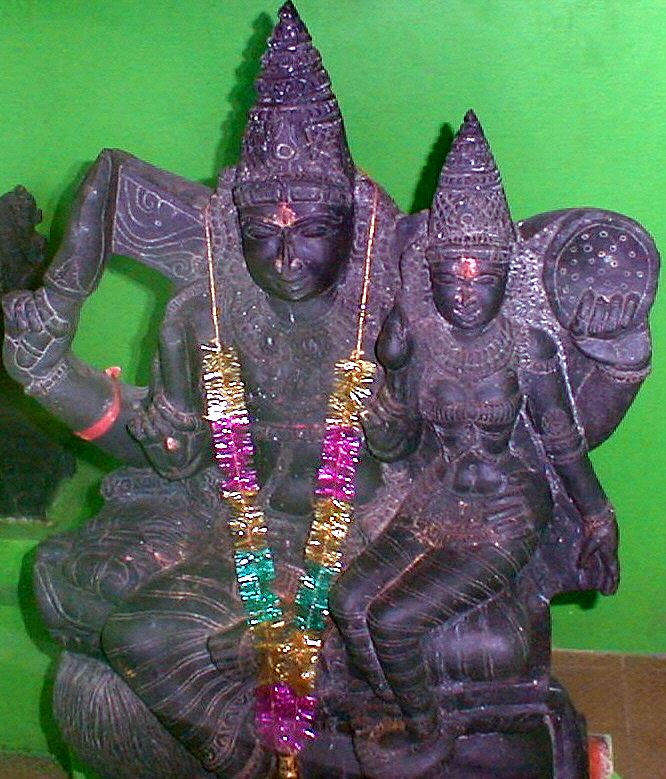
Thus the Suryavanshis and Chandravanshis are born from Vaivasvata Manu.
The kriti is in Nattakurinji ragam and the 4th Tala - Jhampe.
It is "Brihaspati Taarapate".
Remember the part where Dikshithar says Budha bestows his grace to the devotees of Siva?
Budha worshipped Siva at the Swetaranyeswarar Temple in Tiruvenkaadu.
He is golden yellow.
True to his position as the Suraguru, the preceptor of the Devas, he carries a Japamala in his upper right hand and a staff in his upper left.
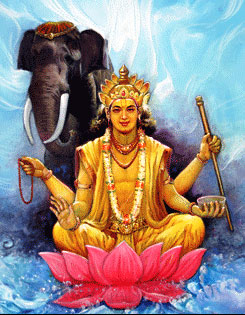
As preceptor, he is a Brahmana and is addressed as Geeshpati, the learned one.
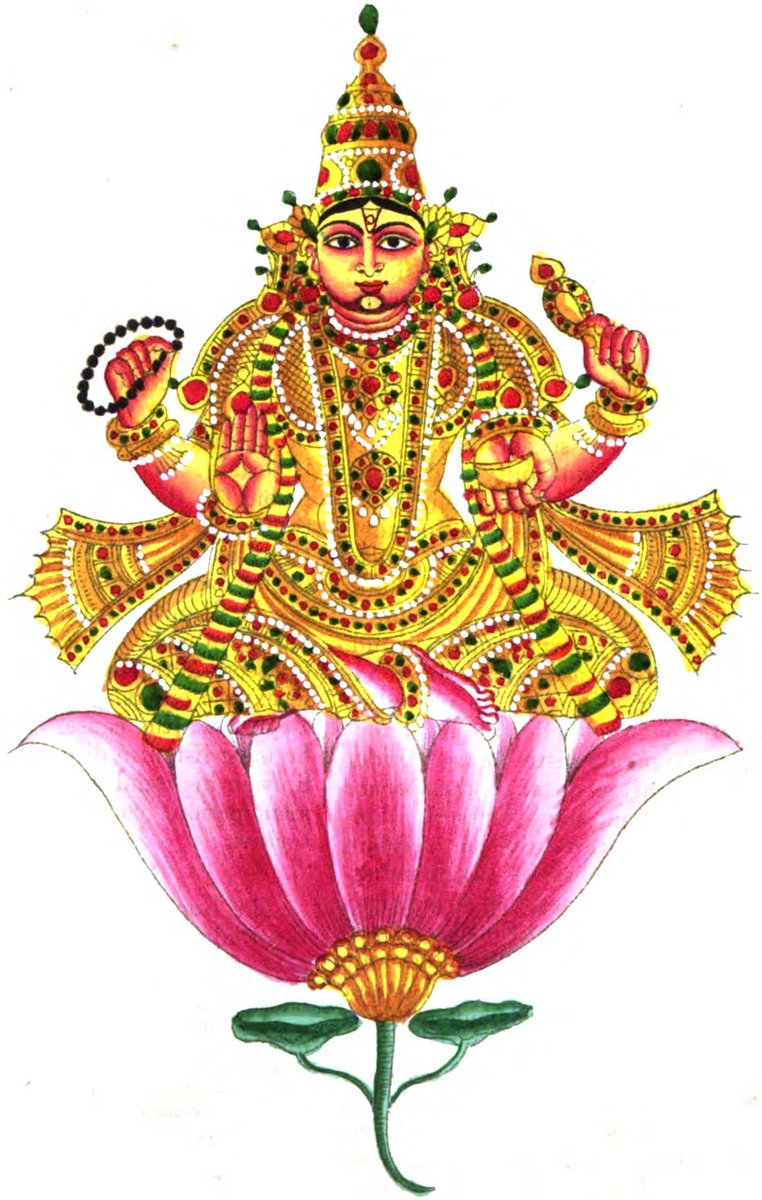
His knowledge is praised and respected not just by Indra and the Devas, but also by Madhava (Vishnu).
He is Shubalakshana, the one with auspicious attributes.
I wonder if the two are connected. Can you slow down ageing simply with equanimity? We should ask the ageless Brihaspati.
Why is Kacha important?
Because Brihaspati sent his son to Shukracharya, the preceptor of the Asuras to learn the Mrita Sanjeevani Mantra.
So, what does he do?
Here's an Amar Chitra Katha cover on the story of Kacha and Devayani.
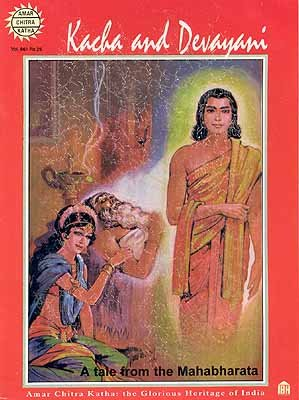
But every time he is killed, upon Devayani's request, Shukracharya revives him using the...you guessed it, Mrita Sanjeevani Mantra.
Until one day, when the Asuras in their attempt to stop him, end up enabling him to learn it.
How?
When he realises that he has drank Kacha, Shukra gets into a dilemma.
But Devayani is insistent. She is inconsolable, having fallen in love with Kacha.
After Kacha learns, Shukra revives him. In turn, Kacha uses the newly learnt Mantra to revive Shukra.
At this point, you'd think this story has a fairytale ending. But ,no.
Kacha conveys that as Guru is to be seen as a father, she being his Guru's daughter is like a sister to him.
Uh-oh.
Kacha counter-curses Devayani that she will never get a husband of strong character.
Kacha's learning goes in vain when it's most needed.
Devayani marries the king Yayati, who takes Sharmistha too as his wife. Yayati's sons establish dynasties that play vital roles in the Mahabharata.
Brihaspati is also called Kalpataru, the wish-fulfilling tree.
He is a delight to Guruguha and Siva.
Interstingly, Dikshithar calls Siva as Puraari, the destroyer of Puras, the three cities.
Dikshithar calls Brihaspati as the bestower of children, Deenabandhu (friend of the weak) and Dayasindhu (ocean of compassion).
This is a reference to the 4 (Chatvari) phases of speech.
1. the inner voice where the thought first occurs - Para Vak
2. forming of the thought through energy in the stomach - Prathama
3. transforming the thought into sound in the throat - Madhyama
4. Actual utterance of speech - Vaikhari
As he is ageless, he is also devoid of illness. He is a Nitikarta, the author of Smriti, a reference to the influential Brihaspati Smriti.
If this seems exaggerated, remember that this is the 1st of Navagraha Kritis that Dikshithar wrote, in order to cure his disciple of a stomach ailment.
The last verses are poetically sound, with coupling of one "Nir-"(without fear/tarnishment) attribute and a positive epithet.
May Lord Brihaspati protect us all! We will look at the kriti Sri Shukra Bhagawantam tomorrow.
But first, who is Shukracharya?
He is represented in a manner similar to Brihaspati, the preceptor of the Devas.
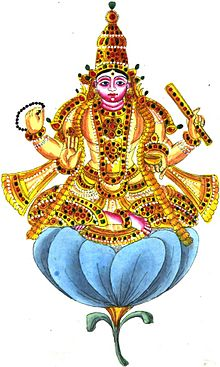
All truth? Remember the kriti from yesterday, where we saw how Brihaspati sent his own son Kacha to Shukra for learning?
He wears a crown and has a body that is dazzling white (Remember that Venus/Shukra is the brightest planet in the night sky).
Remember the Vamana story of how Shukra is blinded to ensure Mahabali completes his promise? That is the reference drawn here.
To the devotee, he bestows his grace for a period of 20 years. This period where a planet presides over a horoscope, called Dasha, is divided into smaller periods called Bhukti. For Shukra, the dasha period is 20 years.
Dikshithar elaborates on the planetary positions in which Shukra bestows Rajayoga, kingdom, wealth etc.
Shukra is the enemy of Surya and Brihaspati (as we have seen, this is about the respective positions in the horoscope).
The kriti is composed in the ragam Paraju, a choice that has been attributed to Shukra being an ancestor of Parasurama.
Tomorrow, Saturday, we will look at the kriti dedicated to Shani.
May Shukra bestow his blessings on us all.
His mount is a crow.
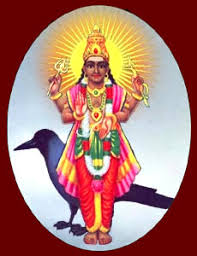
Dikshithar says he always meditates upon Shani, who is the son of Surya, courageous and slow-moving.
Son of Surya? Remember Chhaya, the consort of Surya who we discussed earlier in the thread?
Slow-moving?
We'll have to understand that during Dikshithar's time, the farthest known planet was Saturn. Uranus had been observed,but was not considered a planet in the solar system.
Saturn was the farthest planet known and with a revolution period of almost 30 years, is being called "slow-moving".
Shani causes fear in those dwelling the worldly life and is the harbinger of calamitous events.
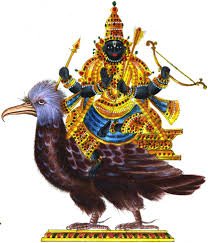
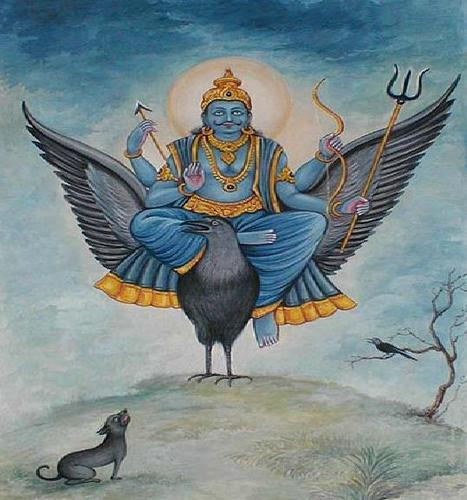
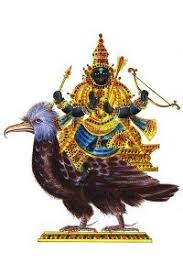
Notice the similarities in the representation below.
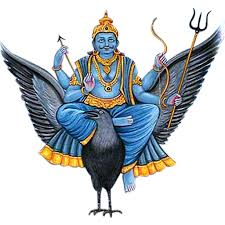
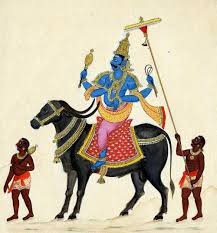
The signature phrase Guruguha is mentioned by saying that Guruguha is delighted by Shani's grace.
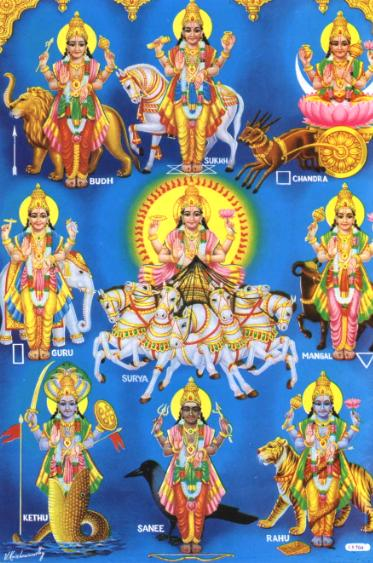
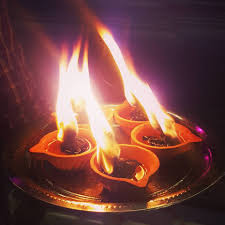
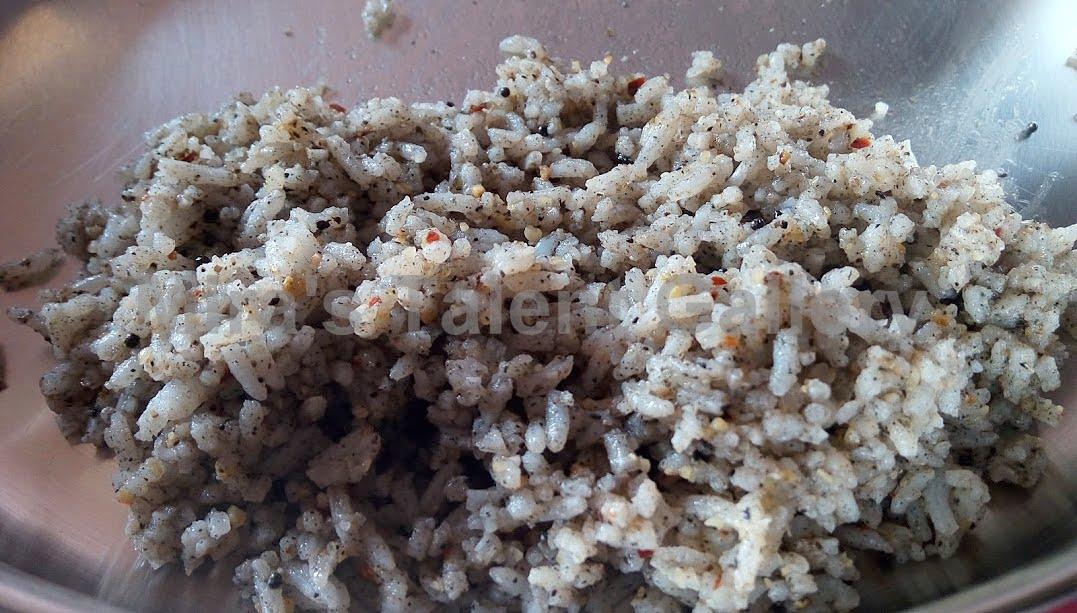
With this, we come to the conclusion of the Kriti on Shani.
The next 2 kritis that we shall discuss tomorrow, were supposedly composed by his disciples to complete the set.
May Shani bless us all!
Both composed in the Rupaka Tala.
But then, should we treat them sub-par because of that? I think not. So, here we go.
If you remember the Samudra Manthan episode, where the Kshira Saagara or Milk Ocean was churned. +
We will not get into the whole story of the poison from Vasuki etc.
Vishnu appeared in the form of Mohini, and asked the Devas and Asuras to assemble on separate sides.
But as always there's a #NotAll scenario. Svarbhanu, a sharp-eyed Asura, realised what Mohini was up to.
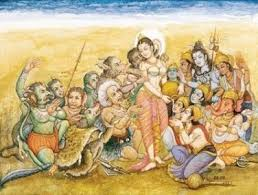
It was too late when they spotted him. Svarbhanu had already swallowed a drop of Amrit.
Mohini, as soon as she learnt of this, threw her discus that cleaved Svarbhanu's head clean off his body.
However, like we said, it was too late. He had become immortal.
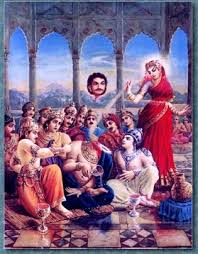
His body grew a reptilian head and became Ketu. At times, Ketu is depicted as a headless torso as well.

How does this correspond to astronomy?
Even if we assume that these were composed by his disciples, since the kritis have the Guruguha signature, I'll attribute them to Dikshithar.
Smaramy Aham - Dikshithar opens by saying that he always has Rahu in his mind.
How deformed? See for yourselves.
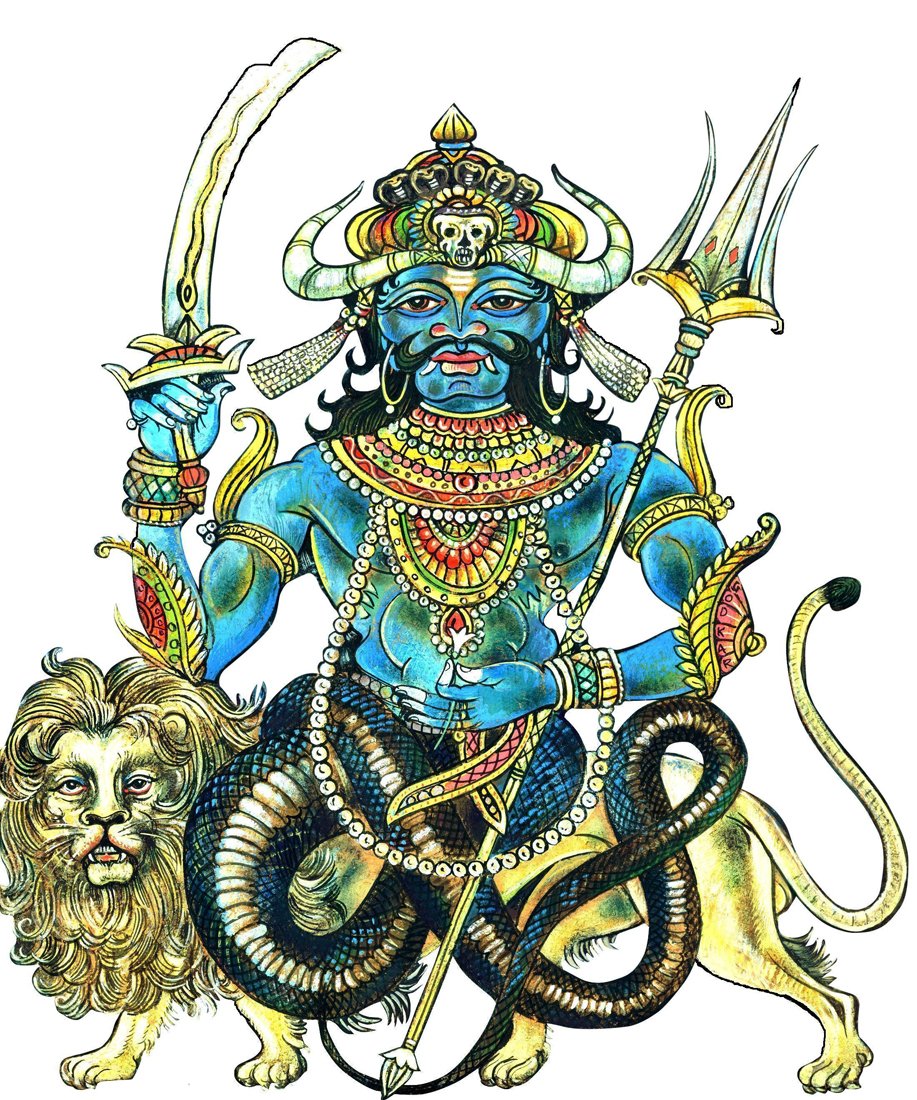
He removes all ills and drives away dangers posed by poisonous serpents, being half-serpent himself.
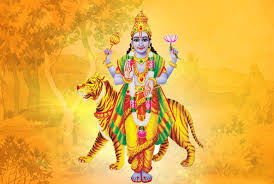
Rahu's face is described as Karaala Vadanam, an adjective that can mean both dreadful and formidable. The next adjective used is Katinam (harsh).
Rahu is endowed with 4 hands and carries a sword and a shield.
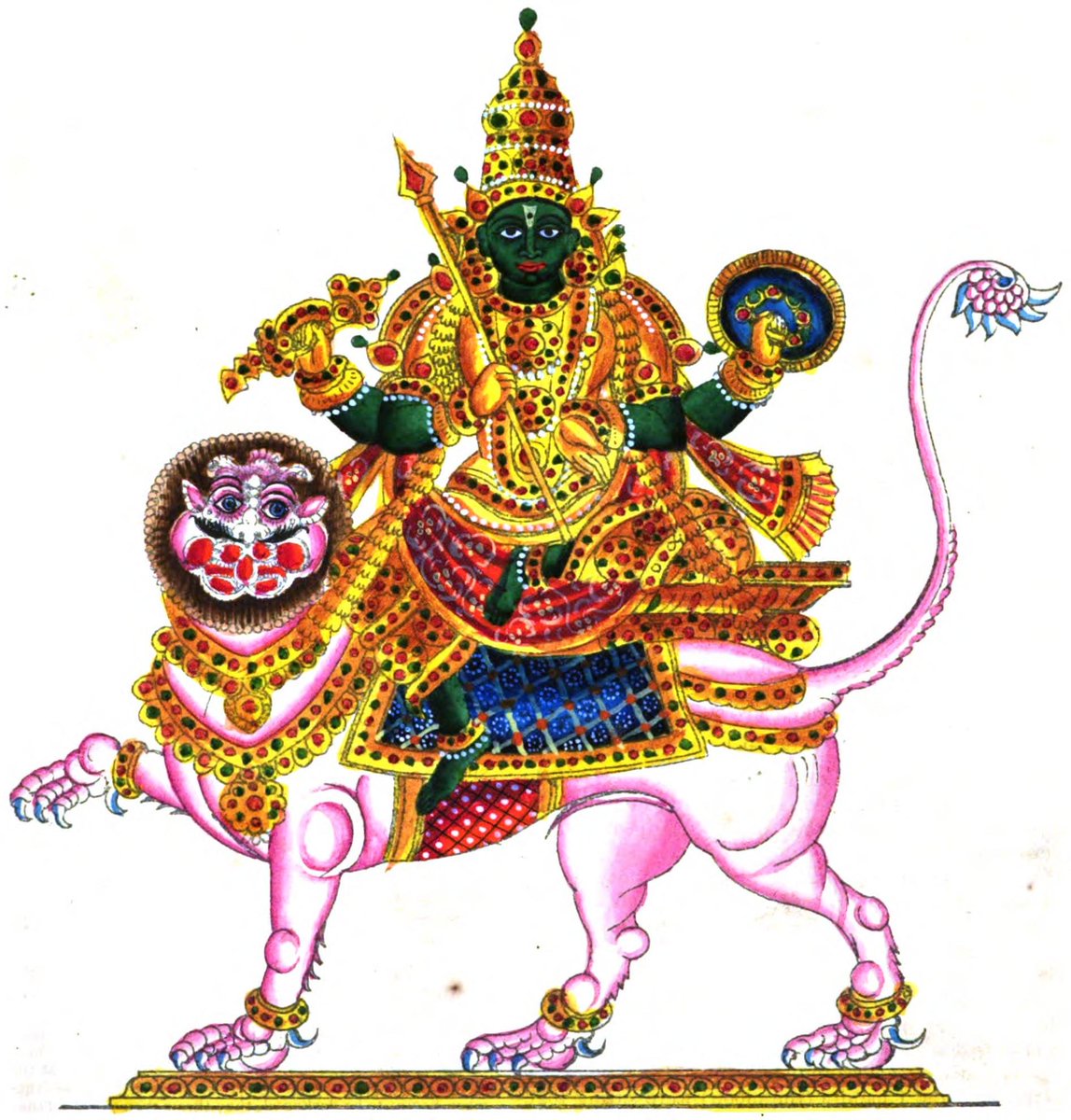
In astrology, he is friendly to both Shani and Shukra.
Dikshithar concludes by saying that he is the cause of delight for Guruguha.
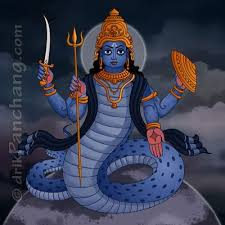
@BhagwaanUvacha





